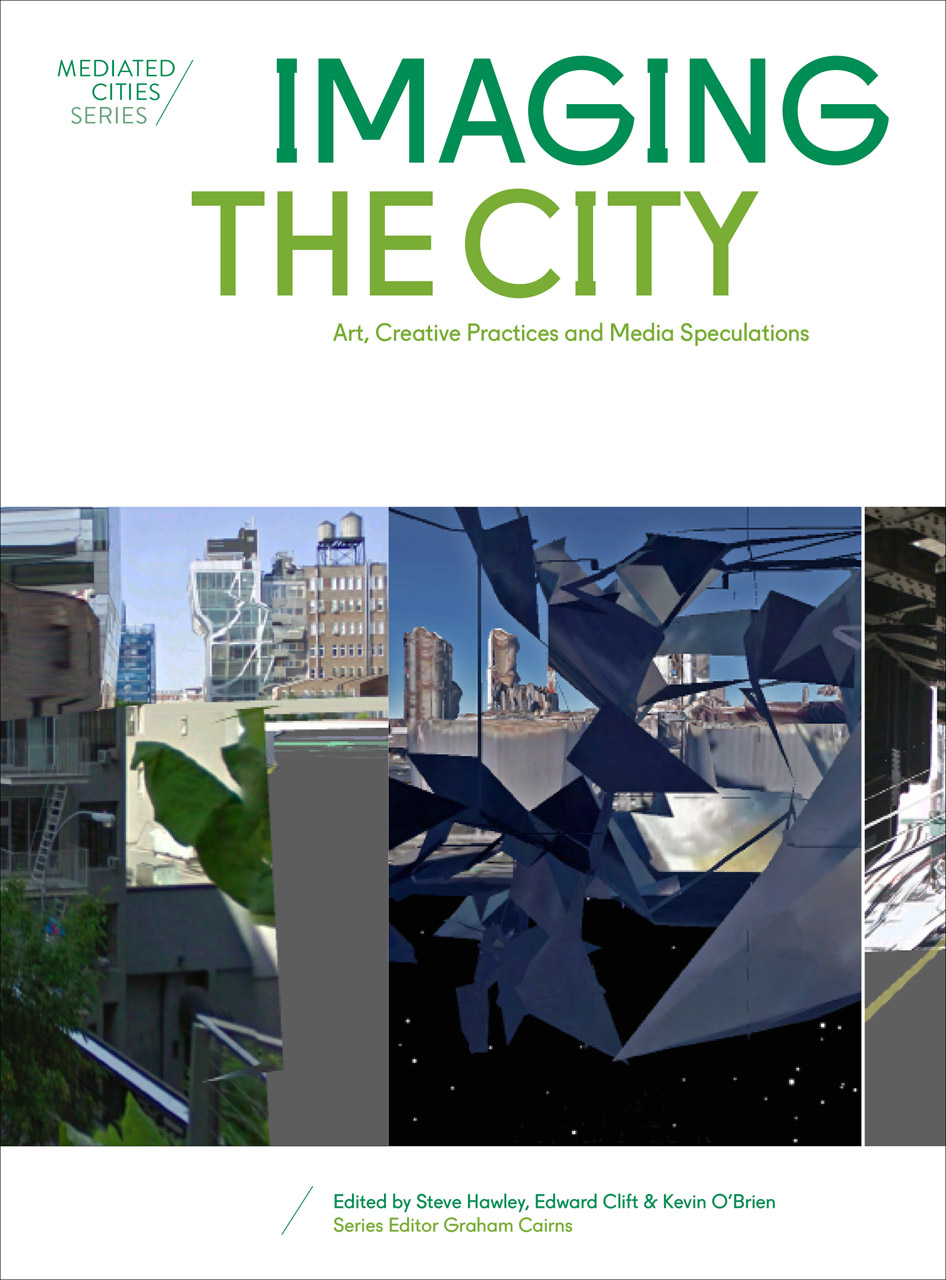Somewhat late news, but the book is indeed now available with my somewhat stream-of-consciousness piece A city of grids and algorithms and soundtracks in cars and planes and glass. Very excited to be part of such an interesting, and I believe intellectually important, approach to media and landscape studies.
"Imaging the City brings together the work of designers, artists, dancers, and media specialists who cross the borders of design and artistic practices to investigate how we perceive the city; how we imagine it; how we experience it; and how we might better design it. Breaking disciplinary boundaries, editors Steve Hawley, Edward Clift, and Kevin O’Brien provocatively open up the field of urban analysis and thought to the perspectives of creative professionals from non-urban disciplines. With a cast of contributors from across the globe, Imaging the City offers international insight for engaging with—and forecasting the future for—our cities."
Publisher: Intellect, The University of Chicago Press.
Showing posts with label Paper. Show all posts
Showing posts with label Paper. Show all posts
Saturday, April 1, 2017
Thursday, June 16, 2016
The book is out
Well, not exactly. It's been announced, but isn't yet available. The word is it will be in July. And, it's not my book - just a book I'm in. But I think that it's all still pretty exciting.
"Imaging the City: Art, Creative Practices and Media Speculations" contains my strange little piece "A city of grids and algorithms and soundtracks in cars and planes and glass". Put out by the very fine folks at AMPS.

"Imaging the City: Art, Creative Practices and Media Speculations" contains my strange little piece "A city of grids and algorithms and soundtracks in cars and planes and glass". Put out by the very fine folks at AMPS.

Monday, June 8, 2015
Different Data Detroit: Presentation at Cumulus 2015, Milan
Rachele Riley and I presented our paper “Different Data: Experimental Design Research for Mapping Cities” at Cumulus Milan 2015: The Virtuous Circle as part of a panel on Experimenting/Prototyping to discuss our approach to and consideration of ‘different data’ and critical design. The paper reviews the project Different Data in its first installation at the Museum of Contemporary Art Detroit (MOCAD) during a three month residency with DesignInquiry. The project was done in collaboration with Patricio Davila, and Dan McCafferty. Our paper will be included in the proceedings and published by McGraw-Hill Education.
 |
| Detail of Different Data Detroit installation at MOCAD, October 2014. |
 |
| View of installation in progress of Different Data Detroit at MOCAD, December 2014. |
 |
| Video still from Different Data Detroit, in collaboration with Rachele Riley. |
Friday, October 10, 2014
Paper Presentation at the Mediated City conference at Woodbury University
Related fairly directly to the atlas work, "The Graphic Semiome: A Theoretical Examination of the Picturing of the City" was a paper I presented at the Mediated City conference at Woodbury University October 2014. Co-organized by the journal Architecture_MPS.
Abstract:
We are immersed in a landscape of visual messages. An ecology of signs, these images and image-texts speak to us as pictures informed by cultural consciousness and memory. The German word for picture is “bild” which shares its origins with “build.” We understand our environment by assembling it or by “picturing” it; building dialectical images and dimensions of reality. We are continually navigating our world by re-picturing it from the continual flow of both established and new image-texts. Images within the city and of the city are catalysts forming and reforming the city through this process of picturing. Using the model of the Semiosphere, a self-regulating ecological system structured by language, we can model urban space as a metabolism comprised of the narratives and mythologies of culture. This paper will outline a model for an urban semiosphere and graphic semiomes within this semiotic ecology.
Abstract:
We are immersed in a landscape of visual messages. An ecology of signs, these images and image-texts speak to us as pictures informed by cultural consciousness and memory. The German word for picture is “bild” which shares its origins with “build.” We understand our environment by assembling it or by “picturing” it; building dialectical images and dimensions of reality. We are continually navigating our world by re-picturing it from the continual flow of both established and new image-texts. Images within the city and of the city are catalysts forming and reforming the city through this process of picturing. Using the model of the Semiosphere, a self-regulating ecological system structured by language, we can model urban space as a metabolism comprised of the narratives and mythologies of culture. This paper will outline a model for an urban semiosphere and graphic semiomes within this semiotic ecology.
 |
| Google image search “Los Angeles punk rock”, June 2014 |
Monday, February 18, 2013
Paper presentation at CAA 2013
“Towards an Open Source Model for Design Research” co-presented with Christopher Moore of Concordia University at the CAA (College Art Association) Annual Conference, New York, NY. February 2013.
Presentation of case study of my research project “Ad-Hoc Atlas” and it’s outcomes as part of ““Design Cities Berlin” with DesignInquiry.
View the paper here.
Presentation of case study of my research project “Ad-Hoc Atlas” and it’s outcomes as part of ““Design Cities Berlin” with DesignInquiry.
View the paper here.
 |
|
From the Ad Hoc Atlas Berlin, "Model of Berlin Prototype Semiospheric Metabolic Reader displaying continuous feed sample data", 2013
|
Subscribe to:
Posts (Atom)
